Very easy Trinidad pepper shrimp recipe
29.7.23
| Recipe by Renz
Get ready to savor a burst of Caribbean flavors with our Trinidad Pepper Shrimp
recipe! This classic seafood delight takes succulent shrimp and infuses
them with the perfect blend of spices, including fiery scotch bonnet pepper and
aromatic ginger.
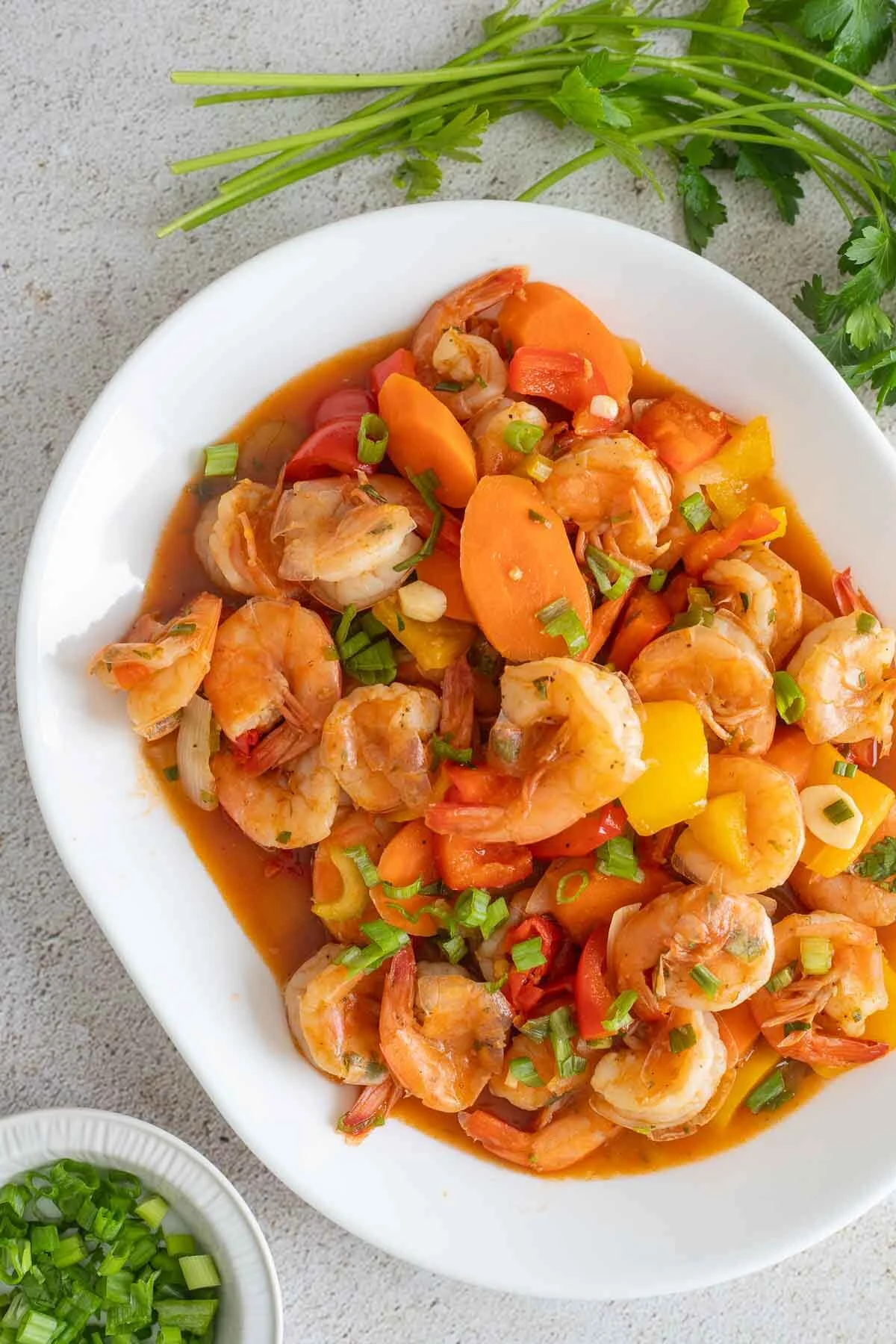
Today, I can't wait to share a mouthwatering culinary adventure – exploring the vibrant flavors of Trinidad pepper shrimp! This classic seafood dish, promises a tantalizing blend of heat and succulent shrimp that will leave your taste buds dancing with delight.
Whether you're a seasoned seafood lover or just someone eager to tantalize your taste buds, this delightful dish is sure to take you on a flavor-packed journey that'll leave you craving for more.
So, join me as we dive headfirst into some Tribagionian cuisine and discover the secrets behind this tantalizing shrimp dish that's got the perfect balance of heat and taste.
Are you ready for this culinary escapade? Let's get cooking and savor the scintillating goodness of Trinidad pepper shrimp together!
Are you ready to spice up your culinary repertoire? Let's get cooking and discover the magic of this dish.
Trini Pepper Shrimp is a classic seafood dish that is deeply rooted in Trinbago cuisine. This tantalizing dish is characterized by its heat, as it boasts a spicy kick that adds a fiery flavor to the succulent shrimp. The dish is different from other types of shrimp dishes including Jamaican pepper shrimp, and curry shrimp, because of its unique blend of spices and peppers.
One of the key ingredients in any pepper shrimp recipe is the use of hot pepper like scotch bonnet pepper, which is known for its intense heat. The added use of black pepper is also a crucial ingredient that adds a distinct flavor to the dish.
The recipe for this dish is heavily influenced by Chinese heritage, which explains the use of some of the ingredients and the cooking techniques used. These immigrants brought their culinary traditions, which included a wide range of spices and flavors not typically found in the local cuisine at the time.
As the Chinese immigrants began to adapt to their new home, they started incorporating local ingredients and cooking techniques into their dishes, resulting in a fusion of flavors and spices that created dishes unique to Trinidad and Tobago. The use of ginger and garlic in many dishes is a testament to the Chinese influence on the local cuisine.
Over time, pepper shrimp has become a beloved favorite. The dish's popularity can be attributed to its bold flavors and spicy heat.
To make this pepper shrimp, you will need various ingredients to create a flavorful and spicy dish. The main component of the dish is, of course, the deveined raw shrimp. Other ingredients include:
Cleaning shrimp may seem like a daunting task, but it is a vital step that should not be skipped for this. It is not a difficult task so just follow these simple steps to clean shrimp if you are using fresh raw shrimp for this dish. If not done correctly, it can affect the taste of the final dish. Here's how to clean shrimp for this recipe:
You can also just avoid the extra work and get the convenience of using frozen large raw deveined shrimp, with the shell on.
As with any dish, I know there would be some questions you might have. In this FAQ section, we will answer some of the most common questions about Trinidad pepper shrimp. If you have any additional questions or even suggestions, drop them in the comments section below.
Trinidad pepper shrimp is a versatile dish that can be enjoyed in many different ways. It is commonly served as a side dish or appetizer.
To enjoy pepper shrimp trini style to the fullest, try pairing it with some traditional Trinidadian side dishes. It pairs well with plain boiled white rice or with fried rice. You can also enjoy it with callaloo or macaroni pie for an authentic Trini Sunday lunch experience.
Pair your pepper shrimp with a glass of sorrel, mauby, or rum punch. These drinks pair perfectly with the rich and spicy flavors of the dish.
After you have made this delicious dish it deserves proper storage techniques to maintain its freshness and ensure food safety. Whether you have leftovers or want to prepare a batch in advance, understanding the correct methods for storing pepper shrimp is essential.
I will guide you through the steps to store pepper shrimp properly, whether in the refrigerator or freezer while highlighting the importance of food safety.
To preserve leftover pepper shrimp, it's crucial to transfer it to an airtight container and refrigerate it promptly, ideally within 2 hours of cooking. The airtight container will prevent any odors from permeating the shrimp and help maintain its texture and flavor. By refrigerating the shrimp promptly, you inhibit the growth of harmful bacteria, extending its shelf life while preserving its taste.
But you don't want to keep it there for too long either. Try to consume the refrigerated shrimp within 3 days to ensure optimal freshness and quality. Beyond this timeframe, the shrimp may begin to lose its texture and flavor, compromising its overall appeal.
If you happen to have a larger batch of cooked shrimp that you wish to store for an extended period, freezing is the preferred method. To freeze, allow it to cool to room temperature first, as placing hot shrimp directly in the freezer may cause condensation and freezer burn. Once cooled, transfer the shrimp to a freezer-safe container, ensuring it is tightly sealed to prevent freezer burn and maintain the shrimp's taste and texture.
When stored correctly in the freezer, pepper shrimp can retain its quality for up to 3 months. However, it's essential to note that the longer the shrimp remains frozen, the more it may experience a loss in flavor and texture. To maintain the best quality, it is advisable to consume frozen shrimp within the first month. Properly labeling the container with the date of freezing can help you keep track of its storage time.
When reheating shrimp, it is crucial to prioritize food safety. We want to eliminate any potentially harmful bacteria, by ensuring that the shrimp reaches an internal temperature of at least 165°F (74°C). If you have a lot of leftovers, make sure to reheat only the portion you intend to eat, avoiding repeated reheating and potential quality loss.

So to all the adventurous foodies out there, we hope you're feeling inspired to embark on this flavor-packed journey and try your hand at cooking this pepper shrimp!
With its unique blend of spices, succulent shrimp, and fiery flavors, this dish is sure to elevate your taste buds to new heights. Don't be shy to adjust the heat to your liking, and remember that the secret to perfection lies in the seasoning!
Once you've whipped up this tantalizing treat in your own kitchen, we'd love to hear all about your culinary adventure. Leave us a comment and star rating, sharing your thoughts, tweaks, and experiences. Your feedback matters to us, and it'll help other aspiring cooks get a taste of what awaits them!
So, grab your aprons, gather your ingredients, and let the flavors of Trinidad pepper shrimp transport you to the vibrant streets of the Caribbean. It's time to spice up your kitchen and savor every bite of this island favorite!
Thank you for joining us on this flavorful adventure. Happy cooking, and bon appétit!
And make sure to check out some more delectable seafood recipes before you go.

Today, I can't wait to share a mouthwatering culinary adventure – exploring the vibrant flavors of Trinidad pepper shrimp! This classic seafood dish, promises a tantalizing blend of heat and succulent shrimp that will leave your taste buds dancing with delight.
Whether you're a seasoned seafood lover or just someone eager to tantalize your taste buds, this delightful dish is sure to take you on a flavor-packed journey that'll leave you craving for more.
So, join me as we dive headfirst into some Tribagionian cuisine and discover the secrets behind this tantalizing shrimp dish that's got the perfect balance of heat and taste.
Are you ready for this culinary escapade? Let's get cooking and savor the scintillating goodness of Trinidad pepper shrimp together!
Are you ready to spice up your culinary repertoire? Let's get cooking and discover the magic of this dish.
What is pepper shrimp Trini style?
Trini Pepper Shrimp is a classic seafood dish that is deeply rooted in Trinbago cuisine. This tantalizing dish is characterized by its heat, as it boasts a spicy kick that adds a fiery flavor to the succulent shrimp. The dish is different from other types of shrimp dishes including Jamaican pepper shrimp, and curry shrimp, because of its unique blend of spices and peppers.
One of the key ingredients in any pepper shrimp recipe is the use of hot pepper like scotch bonnet pepper, which is known for its intense heat. The added use of black pepper is also a crucial ingredient that adds a distinct flavor to the dish.
The recipe for this dish is heavily influenced by Chinese heritage, which explains the use of some of the ingredients and the cooking techniques used. These immigrants brought their culinary traditions, which included a wide range of spices and flavors not typically found in the local cuisine at the time.
As the Chinese immigrants began to adapt to their new home, they started incorporating local ingredients and cooking techniques into their dishes, resulting in a fusion of flavors and spices that created dishes unique to Trinidad and Tobago. The use of ginger and garlic in many dishes is a testament to the Chinese influence on the local cuisine.
Over time, pepper shrimp has become a beloved favorite. The dish's popularity can be attributed to its bold flavors and spicy heat.
Ingredients needed for this dish
To make this pepper shrimp, you will need various ingredients to create a flavorful and spicy dish. The main component of the dish is, of course, the deveined raw shrimp. Other ingredients include:
Sauces:
- Soy sauce: Adds a nice salty flavor to the dish with a hint of sweetness. Using a dark soy sauce and low sodium would be best.
- Ketchup: This will add the slightly sweet and tangy flavor to the sauce that you need.
- Corn starch: This will be used to thicken the sauce for the shrimp. This is optional and I will let you know what I use to decide if you should use it or not.
Fresh produce:
- Sweet pepper: This will provide a balance to the spice and add a touch of sweetness. I like to cut these into chunks for this dish.
- Carrots: Another item that would help combat the spiciness of this dish by providing some sweetness and a nice crunch.
- Scotch bonnet peppers: Known for its fiery heat, this pepper will give the dish its signature spiciness.
- Pimento peppers: To add an extra layer of flavor to the dish that is not spicy.
- Onion layers: These will add a slightly sweet and savory flavor to the dish, as well as a crunchy texture.
- Chadon beni: Adds that earthy flavor to the dish.
- Grated ginger: This will provide a warm and slightly spicy taste to the shrimp. The addition of ginger is what really sets this dish apart. The main point of difference with Jamaican pepper shrimp
How do you clean shrimp?
Cleaning shrimp may seem like a daunting task, but it is a vital step that should not be skipped for this. It is not a difficult task so just follow these simple steps to clean shrimp if you are using fresh raw shrimp for this dish. If not done correctly, it can affect the taste of the final dish. Here's how to clean shrimp for this recipe:
- Start by removing the heads, and tails from the raw shrimp using a sharp knife or your hands. Gently twist the head and remove it from the body. Then, take hold of the tail and peel it off the shrimp.
- Rinse the shrimp thoroughly under cold running water. This will help remove any remaining debris or dirt that may be on the shrimp.
- Pat the shrimp dry with paper towels to remove any excess moisture. This step is important as too much moisture can affect the seasoning and flavor of the shrimp.
- If needed, use a small paring knife to devein the shrimp by cutting a shallow slit down the back of each shrimp and pulling the dark vein out with the tip of the knife. Deveining is optional, but it is recommended as it improves the texture and appearance of the shrimp.
- Place the cleaned shrimp in a clean bowl and wash it with water and some lime juice.
You can also just avoid the extra work and get the convenience of using frozen large raw deveined shrimp, with the shell on.
How to make this dish
-
Begin by cleaning the shrimp following the directions above. Rinse it out
and pat dry with a paper towel to remove excess water. Season with ginger,
black pepper, garlic, chadon beni, pimento peppers, and lime juice, ensuring
they are evenly coated. Cover with plastic wrap and Set aside for at least
30 minutes.
-
In a large pan (I used my
10.5" Caraway fry pan), heat the vegetable oil over medium heat. Add the sliced-up hot pepper to
the oil and fry it for about 2 minutes. Then add the onion, sweet peppers,
celery, and carrots and continue to sauté for 2-3 minutes, stirring
occasionally, until the vegetables begin to soften.
-
Add half a cup of water to the dish along with the soy sauce, and most of
the ketchup. Combine well and coat the vegetables.
-
Add the seasoned shrimp to the pan and the remaining water and ketchup. Toss
until evenly coated with the vegetables. Cook for about 4 more minutes or
until the shrimp are cooked through and opaque.
- Taste for salt and black pepper and add accordingly.
- Remove the pan from the heat and allow the shrimp to rest for a few minutes before serving.
- Garnish with a sprinkle of fresh cilantro. For an extra kick, add some slices of scotch bonnet pepper and enjoy!
Tips and tricks
- Jumbo shrimp is the best option for size in this dish.
- Already have some green seasoning made? Add a spoonful to the shrimp to add a new layer of flavor.
- If you see the shrimp is ready but the sauce is still thin, add a tablespoon of cornstarch to a tablespoon of water and make a paste. Add the paste to the sauce and mix well. Then let it simmer some more to thicken up.
- If you taste it and it's too spicy, add more ketchup and water to the pot.
- If you want the dish to be spicier you can include the seeds of the pepper instead of removing them. You can also use pepper sauce to add additional spice.
- Another great addition (Or substitution for soy sauce) is Worcestershire sauce.
- If you want to add some sweet flavor, try using some pineapple chunks in this dish.
Trinidad pepper shrimp FAQ: Frequently Asked Questions about this spicy Caribbean dish
As with any dish, I know there would be some questions you might have. In this FAQ section, we will answer some of the most common questions about Trinidad pepper shrimp. If you have any additional questions or even suggestions, drop them in the comments section below.
What to eat pepper shrimp trini style with?
Trinidad pepper shrimp is a versatile dish that can be enjoyed in many different ways. It is commonly served as a side dish or appetizer.
To enjoy pepper shrimp trini style to the fullest, try pairing it with some traditional Trinidadian side dishes. It pairs well with plain boiled white rice or with fried rice. You can also enjoy it with callaloo or macaroni pie for an authentic Trini Sunday lunch experience.
Pair your pepper shrimp with a glass of sorrel, mauby, or rum punch. These drinks pair perfectly with the rich and spicy flavors of the dish.
Storage of pepper shrimp - ensuring freshness and food safety
After you have made this delicious dish it deserves proper storage techniques to maintain its freshness and ensure food safety. Whether you have leftovers or want to prepare a batch in advance, understanding the correct methods for storing pepper shrimp is essential.
I will guide you through the steps to store pepper shrimp properly, whether in the refrigerator or freezer while highlighting the importance of food safety.
Refrigeration for Freshness:
To preserve leftover pepper shrimp, it's crucial to transfer it to an airtight container and refrigerate it promptly, ideally within 2 hours of cooking. The airtight container will prevent any odors from permeating the shrimp and help maintain its texture and flavor. By refrigerating the shrimp promptly, you inhibit the growth of harmful bacteria, extending its shelf life while preserving its taste.
Time Limit in the Refrigerator:
But you don't want to keep it there for too long either. Try to consume the refrigerated shrimp within 3 days to ensure optimal freshness and quality. Beyond this timeframe, the shrimp may begin to lose its texture and flavor, compromising its overall appeal.
Freezing for Extended Storage:
If you happen to have a larger batch of cooked shrimp that you wish to store for an extended period, freezing is the preferred method. To freeze, allow it to cool to room temperature first, as placing hot shrimp directly in the freezer may cause condensation and freezer burn. Once cooled, transfer the shrimp to a freezer-safe container, ensuring it is tightly sealed to prevent freezer burn and maintain the shrimp's taste and texture.
Frozen Shelf Life:
When stored correctly in the freezer, pepper shrimp can retain its quality for up to 3 months. However, it's essential to note that the longer the shrimp remains frozen, the more it may experience a loss in flavor and texture. To maintain the best quality, it is advisable to consume frozen shrimp within the first month. Properly labeling the container with the date of freezing can help you keep track of its storage time.
Reheating precautions:
When reheating shrimp, it is crucial to prioritize food safety. We want to eliminate any potentially harmful bacteria, by ensuring that the shrimp reaches an internal temperature of at least 165°F (74°C). If you have a lot of leftovers, make sure to reheat only the portion you intend to eat, avoiding repeated reheating and potential quality loss.

So to all the adventurous foodies out there, we hope you're feeling inspired to embark on this flavor-packed journey and try your hand at cooking this pepper shrimp!
With its unique blend of spices, succulent shrimp, and fiery flavors, this dish is sure to elevate your taste buds to new heights. Don't be shy to adjust the heat to your liking, and remember that the secret to perfection lies in the seasoning!
Once you've whipped up this tantalizing treat in your own kitchen, we'd love to hear all about your culinary adventure. Leave us a comment and star rating, sharing your thoughts, tweaks, and experiences. Your feedback matters to us, and it'll help other aspiring cooks get a taste of what awaits them!
So, grab your aprons, gather your ingredients, and let the flavors of Trinidad pepper shrimp transport you to the vibrant streets of the Caribbean. It's time to spice up your kitchen and savor every bite of this island favorite!
Thank you for joining us on this flavorful adventure. Happy cooking, and bon appétit!
And make sure to check out some more delectable seafood recipes before you go.
Seafood recipes:
- Curry crab
- Smoked herring
- Stew saltfish
- Jamaican escovitch fish
- Bahamian conch fritters
- Curry lobster
-
Seafood soup

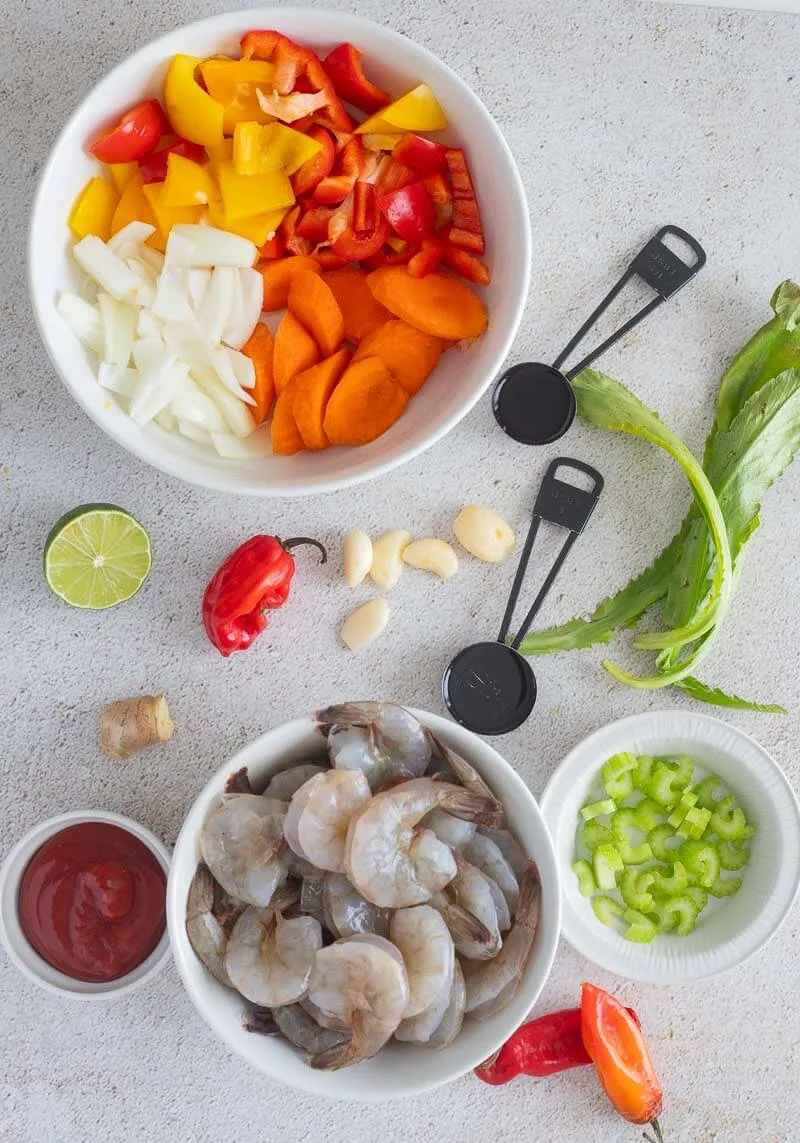
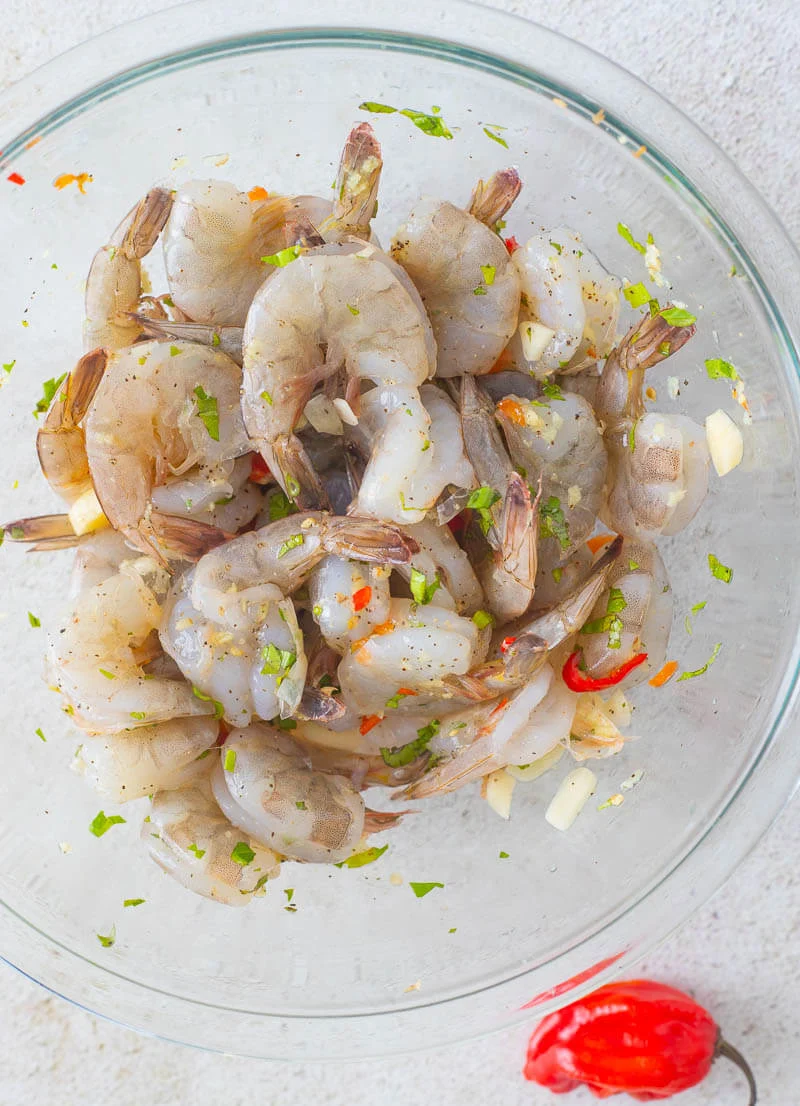
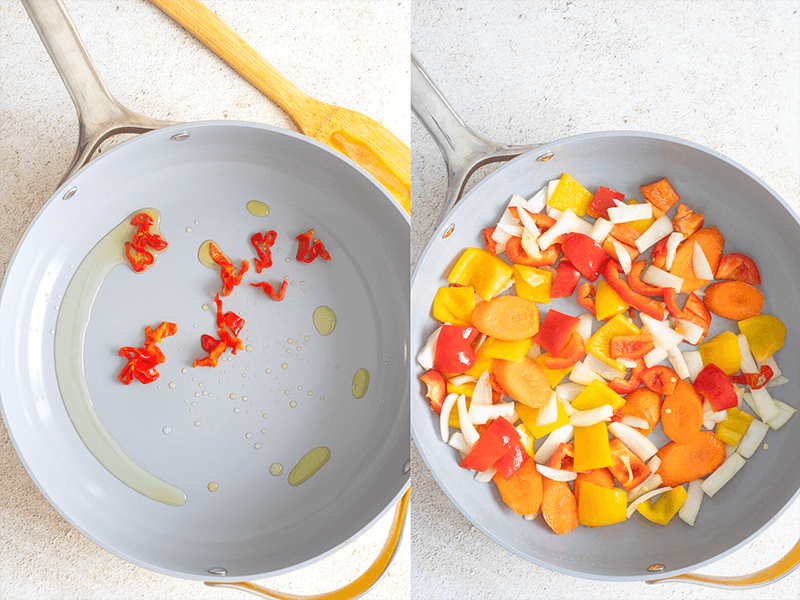


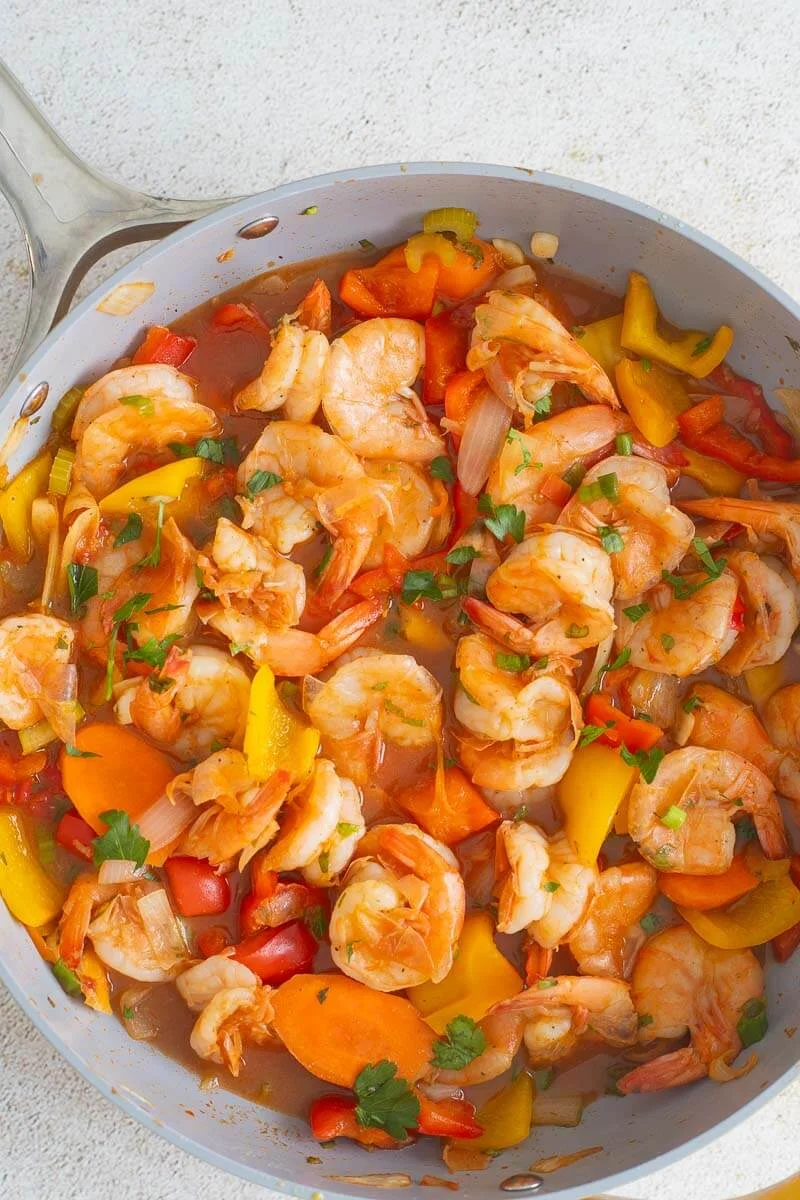
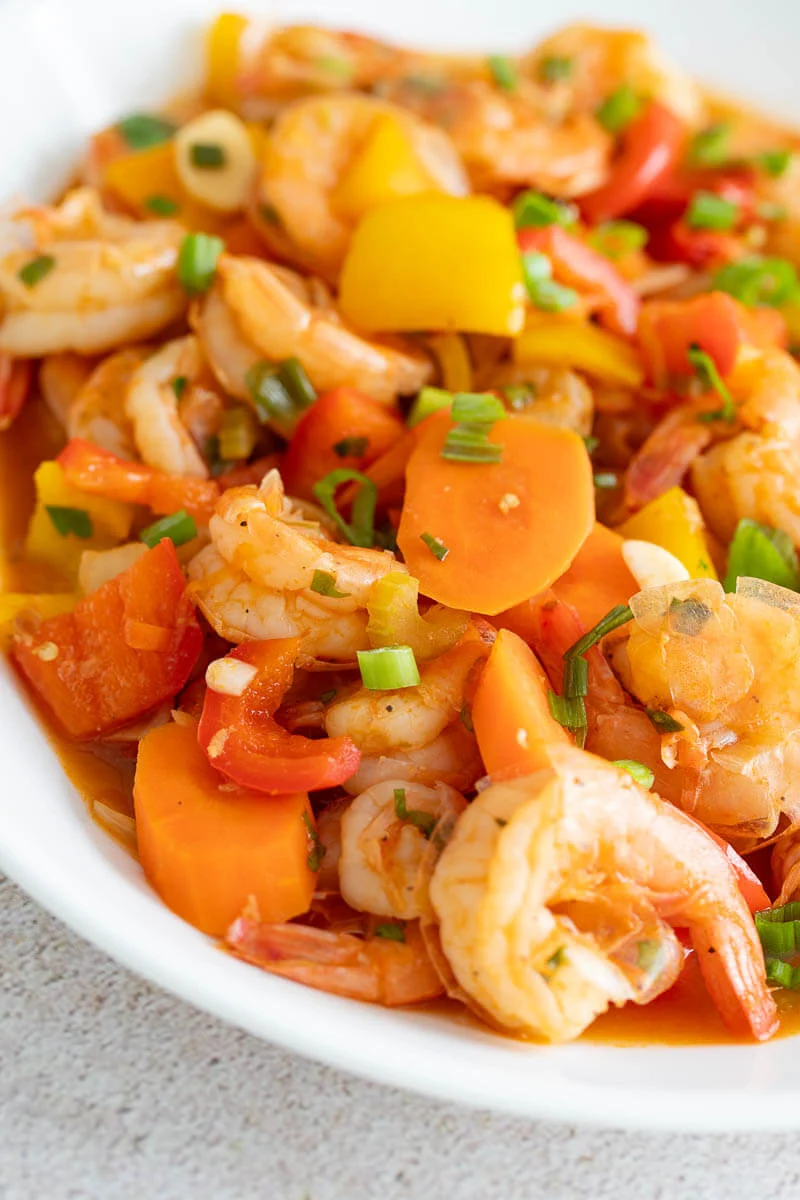

Comments
Post a Comment